
A hundred thousand dollars used to be considered a solid annual income, but nowadays, the value depends on your ZIP code. The good news is that if you live in the Midwest or are planning a move, the six-figure salary offers more purchasing power than the West Coast or many Eastern states.
Also See: Here’s the Line Between Middle Class and Upper-Middle Class in Every State
Learn More: 5 Types of Cars Retirees Should Stay Away From Buying
To find out how much bang you really get for your buck in the 12 Midwestern states, GOBankingRates used data from the Bureau of Labor Statistics and the Missouri Economic Research and Information Center to compile cost-of-living indexes (100 equals the national average) and determine how far a $100,000 salary will go in the Midwest.

Illinois
- Cost-of-living index: 94.7
- Annual expenditures: $85,871
- % of annual expenditures that $100K covers: 116.5%
With Chicago serving as a major cultural hotspot and affordable farmland elsewhere in the state, Illinois offers a high quality of life at a relatively low cost. A $100,000 salary covers all typical annual expenditures with a nice chunk left over. Residents also get a break on food: Groceries come in just below the national median, with average monthly costs around $579.
Check Out: Here’s the Minimum Net Worth To Be Considered Upper Class in Your 50s
Find More: What Is the Estimated Median Income for the Upper-Middle Class in 2025?

Indiana
- Cost-of-living index: 90.8
- Annual expenditures: $82,335
- % of annual expenditures that $100K covers: 121.5%
Indiana offers a mix of urban perks and a more relaxed, family-friendly pace of life at cost-effective prices. Housing in Indiana sits 24% below the median, and the Hoosier State is below the median for healthcare and utilities as well.
Discover More: What Salary Single People Need To Live Comfortably in 100 Major US Cities
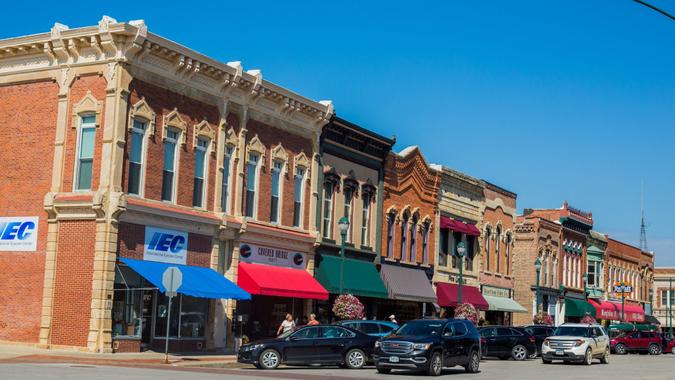
Iowa
- Cost-of-living index: 89.6
- Annual expenditures: $81,247
- % of annual expenditures that $100K covers: 123.1%
Known for its significant contributions to farming and agriculture, Iowa is a vital part of the Heartland of America. The state has the country’s third-lowest cost of groceries, with monthly expenses averaging $562. Housing in Iowa is about 22% cheaper than the national average.
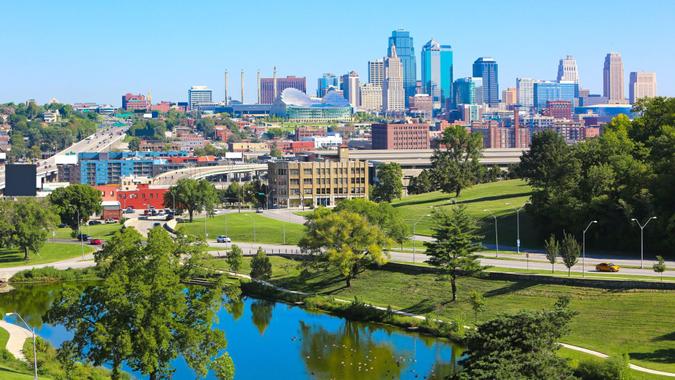
Kansas
- Cost-of-living index: 89.7
- Annual expenditures: $81,337
- % of annual expenditures that $100K covers: 122.9%
Kansas is a nice blend of tranquil rural life and small-town charm at a low cost. The state has the country’s sixth-least expensive groceries, with an average monthly cost of $567, and housing is the eighth least expensive.
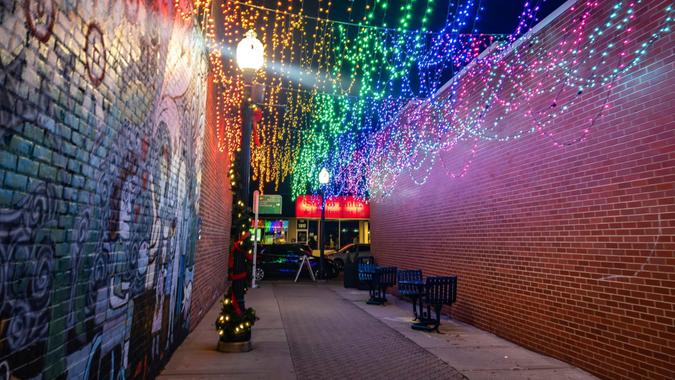
Michigan
- Cost-of-living index: 89.8
- Annual expenditures: $81,428
- % of annual expenditures that $100K covers: 122.8%
Michigan is home to 3,288 miles of freshwater coastline, great beaches and affordable living. A $100,000 salary covers all standard annual expenditures, with 22.8% remaining, and housing is the fifth cheapest in the country.
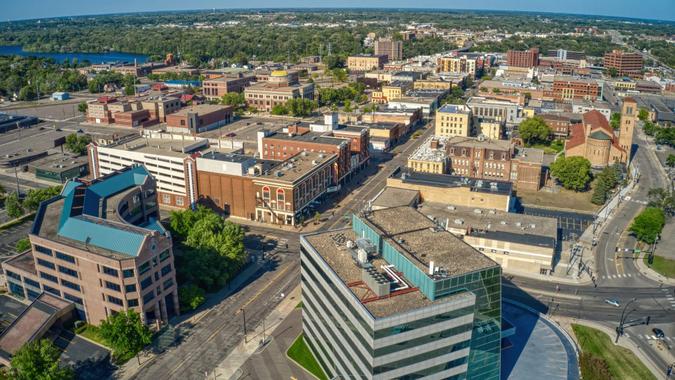
Minnesota
- Cost-of-living index: 93.7
- Annual expenditures: $84,964
- % of annual expenditures that $100K covers: 117.7%
With its family-friendly environment, endless outdoor activities and cheap cost of living, Minnesota has a balanced, high-quality life that won’t break the bank. A six-figure salary covers all standard annual expenditures, and Minnesota ranks 15th for the lowest housing costs in the U.S.
Read More: 3 Signs You’ve ‘Made It’ Financially, According to Financial Influencer Genesis Hinckley
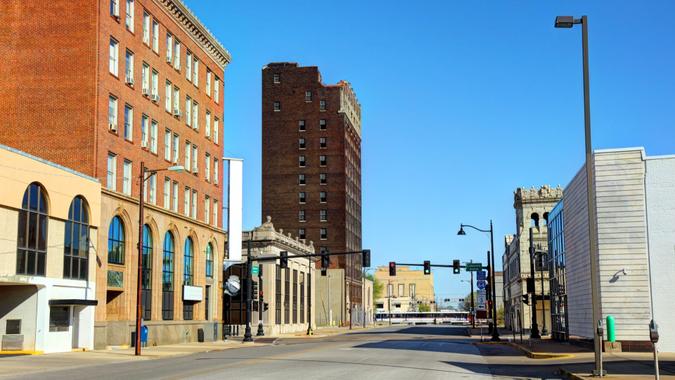
Missouri
- Cost-of-living index: 88.0
- Annual expenditures: $79,796
- % of annual expenditures that $100K covers: 125.3%
Residents in Missouri not only enjoy a great combination of outdoor activities and city attractions, but it’s also budget friendly. The state is tied for the seventh-lowest grocery index (96.7) and has the sixth-least expensive housing (74.8), the second-least expensive transportation (87.2) and the ninth-least expensive housing (91.0).
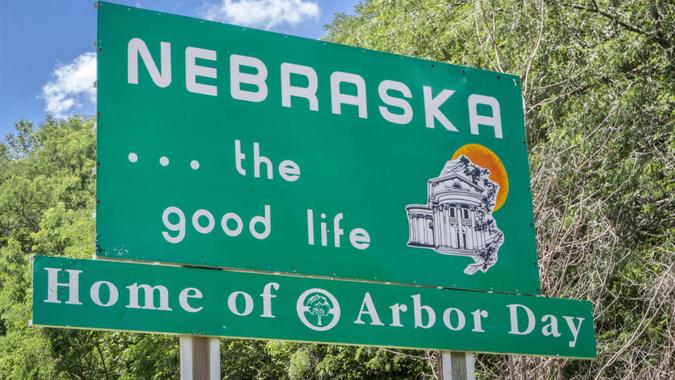
Nebraska
- Cost-of-living index: 92.4
- Annual expenditures: $83,786
- % of annual expenditures that $100K covers: 119.4%
Nebraska offers a unique blend of natural beauty, booming cities, wide-open spaces, and a strong sense of community at an affordable cost. Housing expenditures average $13,185 annually, the 12th-lowest in the nation, while utilities and transportation each rank as the 14th cheapest.
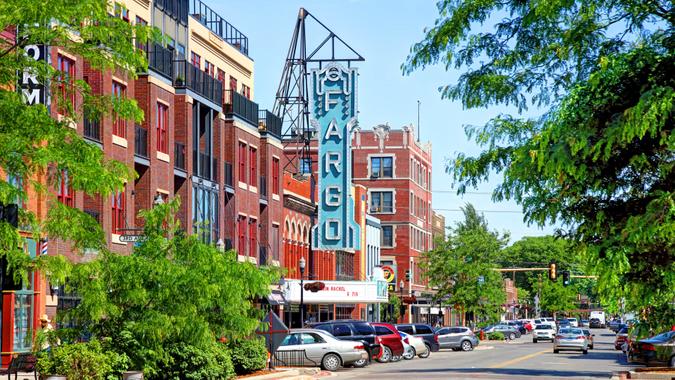
North Dakota
- Cost-of-living index: 90.8
- Annual expenditures: $82,335
- % of annual expenditures that $100K covers: 121.5%
North Dakota boasts scenic landscapes, friendly locals and affordable prices. Groceries are just under the national median at 97.2 and have a monthly average of $571, while housing ranks as the 10th least expensive, 23% cheaper than average.
Explore More: The Safest and Richest US Cities To Live in 2025
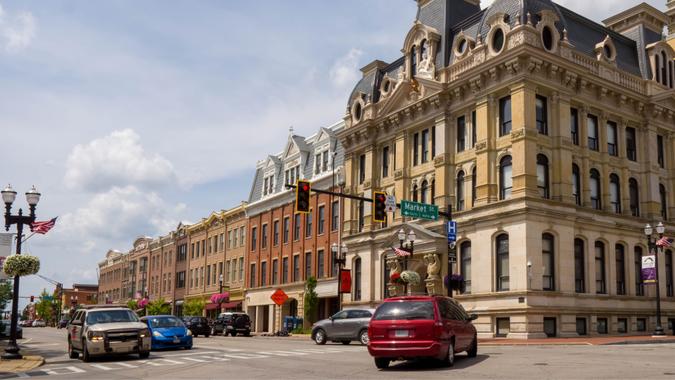
Ohio
- Cost-of-living index: 95.1
- Annual expenditures: $86,234
- % of annual expenditures that $100K covers: 116.0%
Whether you’re in search of a vibrant city life or a welcoming small town at a reasonable price, Ohio’s cost of living is attractive. Residents pay 87% of the national median for housing, which translates to an average monthly cost of $1,212, while groceries are just below the national median.
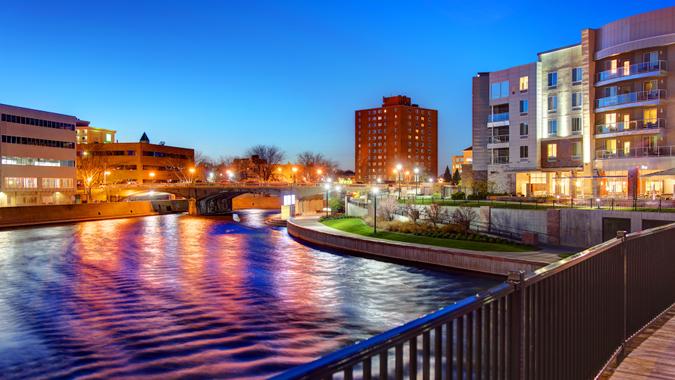
South Dakota
- Cost-of-living index: 97.3
- Annual expenditures: $88,229
- % of annual expenditures that $100K covers: 113.3%
South Dakota has stunning terrain, iconic landmarks and reasonable prices. While residents pay an average of $608 a month for groceries, which is 3.5% more than the national median for groceries, a $100,000 annual wage covers all typical annual expenses.
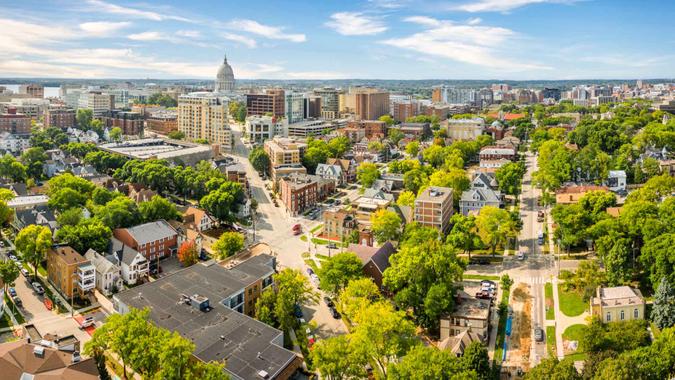
Wisconsin
- Cost-of-living index: 99.5
- Annual expenditures: $90,224
- % of annual expenditures that $100K covers: 110.8%
While Wisconsin is known as one of the leading dairy producers in the country, the state also offers one-of-a-kind tourist attractions, stunning lakes and a cheap cost of living. Residents pay just under the national median for groceries, $585 a month on average. Housing is also right below the national median, with average yearly costs of $16,725.
Methodology: For this analysis, GOBankingRates first sourced the national average annual expenditures for people with incomes between $100,000 and $149,999 from the Bureau of Labor Statistics’ 2023 Consumer Expenditure Survey data. GBR then created state-level annual expenditure estimates by multiplying the national figure by each state’s cost-of-living index for Q1 2025 from the Missouri Economic Research and Information Center. Finally, GBR determined what percentage of annual expenditures is covered by $100,000 by dividing $100,000 by each state’s average annual expenditures estimate. All data was collected on and is up to date as of July 29, 2025.
More From GOBankingRates
This article originally appeared on GOBankingRates.com: How Far a $100K Salary Goes in the Midwest







